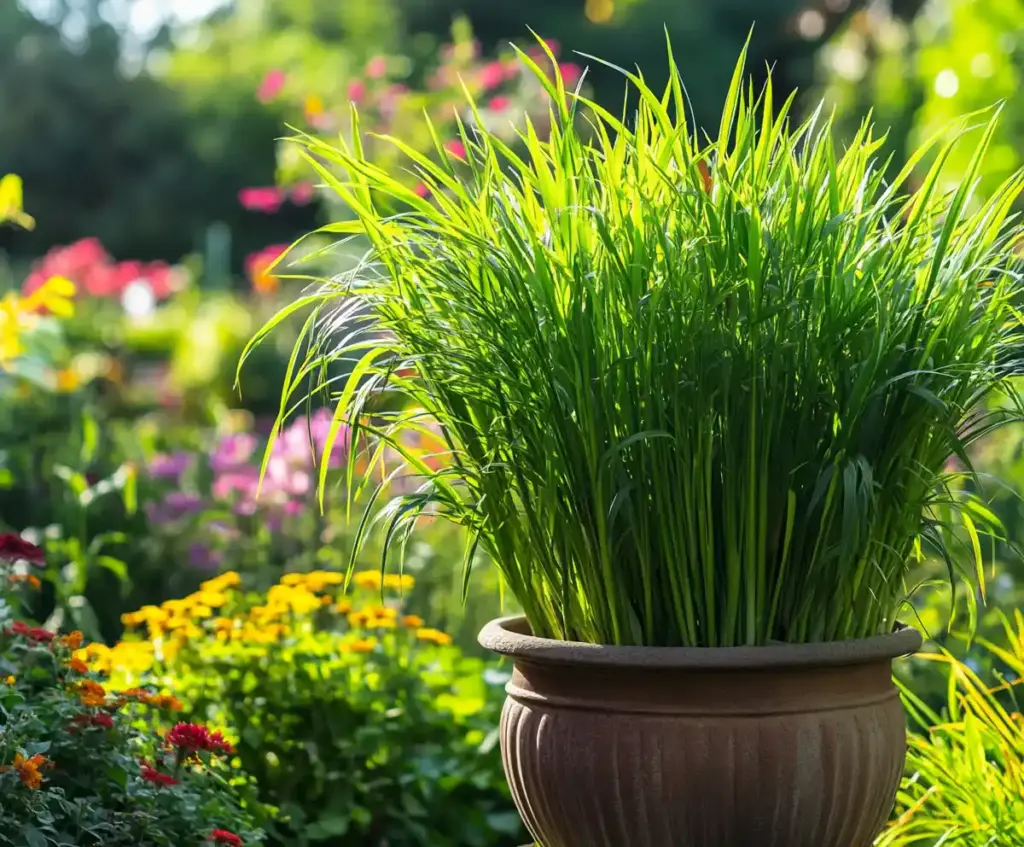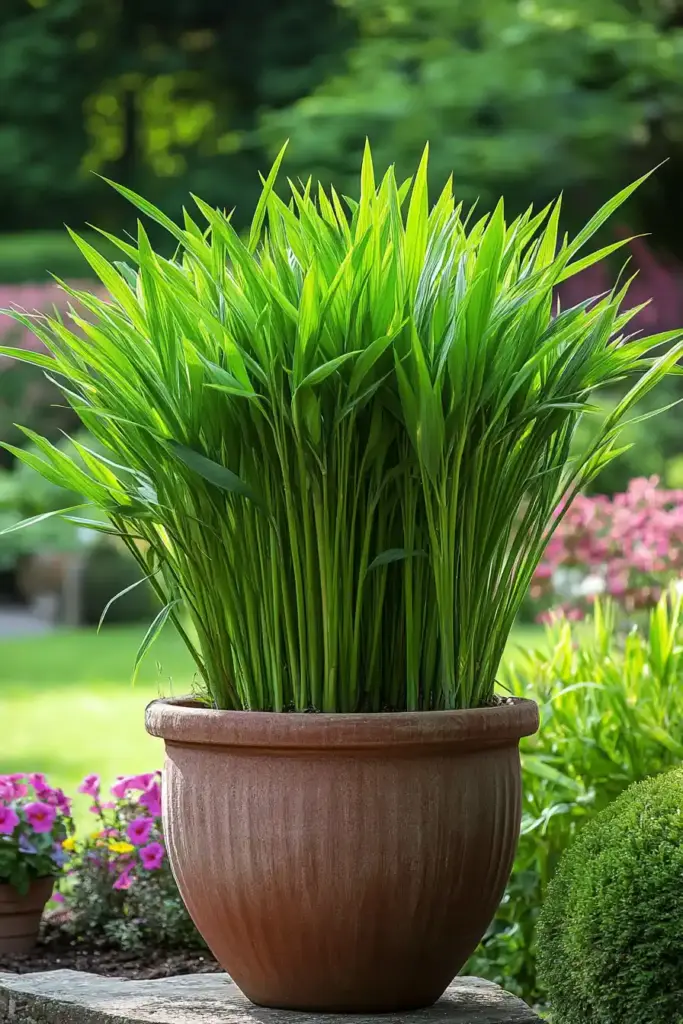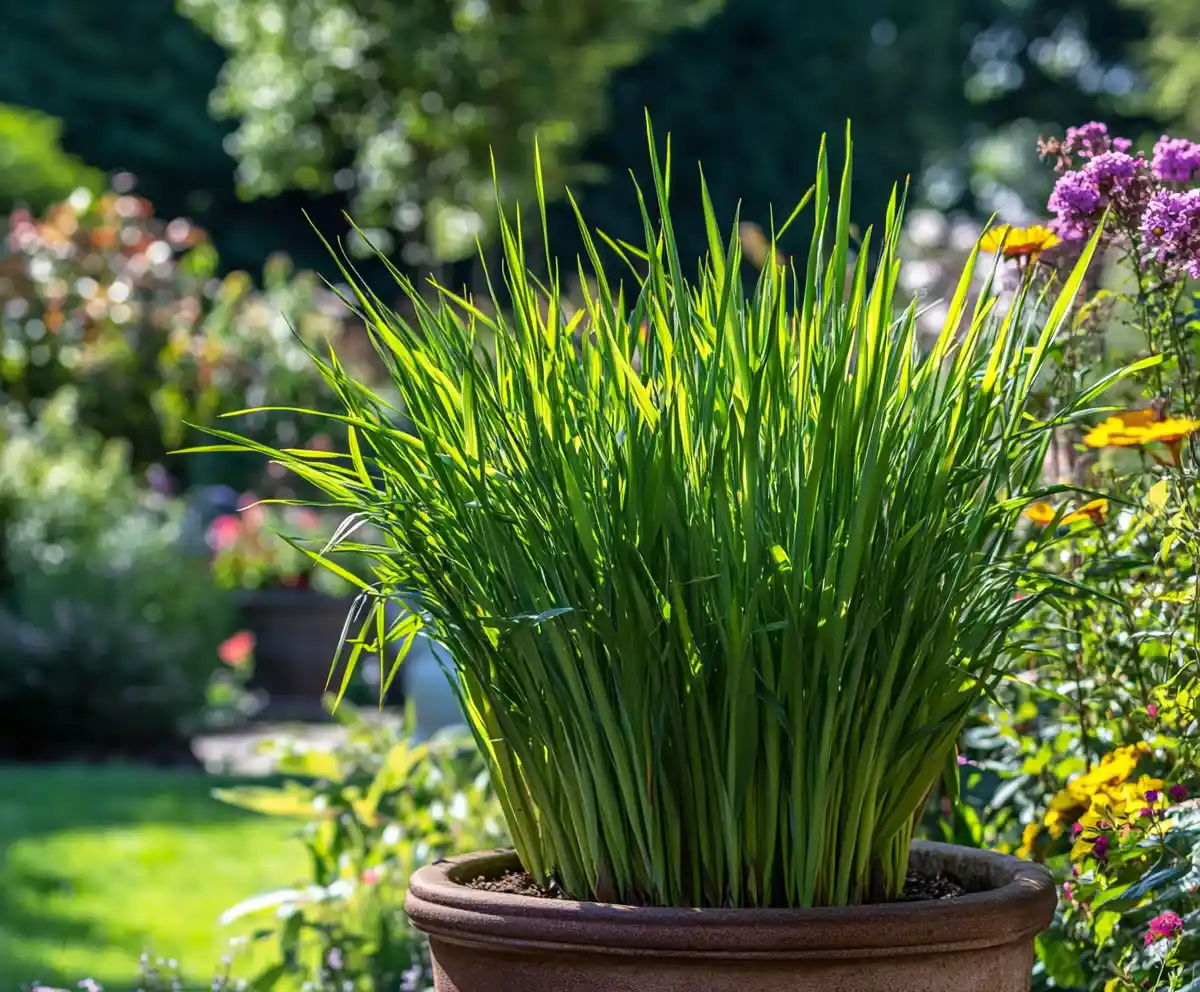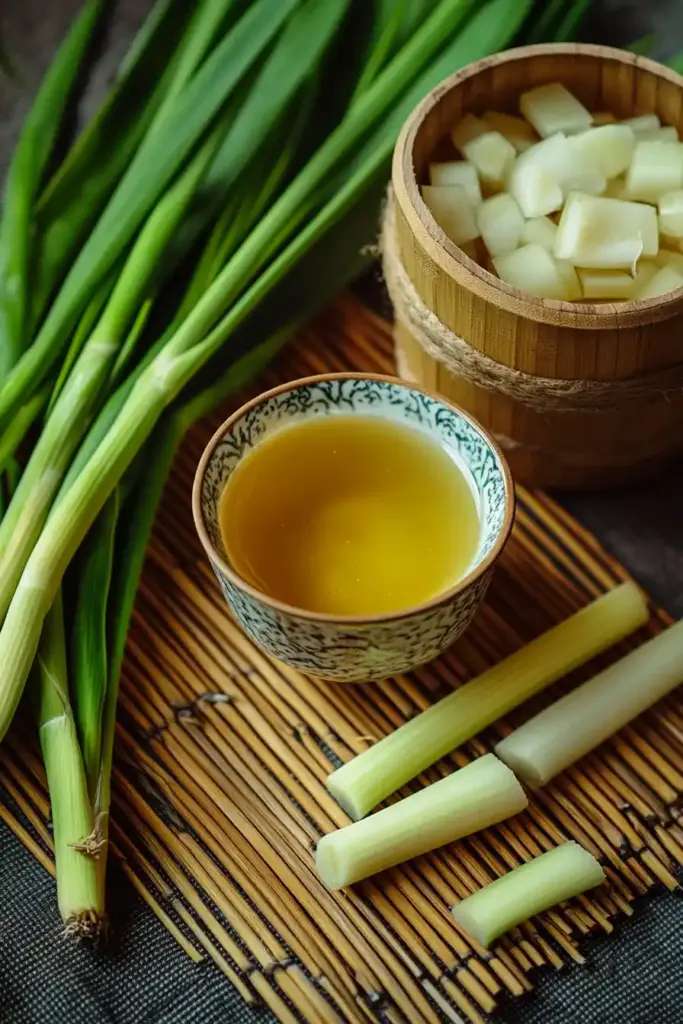Lemongrass is more than just a pretty plant in your backyard. With its tall, citrus-scented stalks and graceful, ornamental appeal, this herb is both functional and flavorful—making it a must-have for gardeners and home cooks alike. While it’s commonly recognized as a natural mosquito repellent, lemongrass boasts a wide array of uses ranging from culinary delights to wellness remedies and even household hacks.
Whether you’re growing lemongrass for its beauty or benefits, you’ll be surprised by how many ways this vibrant herb can enhance your kitchen, calm your nerves, and help you maintain a greener, cleaner lifestyle.
Table of Contents
Culinary Uses for Lemongrass
Lemongrass brings a delicate citrus flavor that elevates many dishes without overpowering them. From rice to marinades, here are some of the most delicious and creative uses for lemongrass in your kitchen:
1. Infuse Flavor into Rice
Add a fresh twist to your everyday rice by infusing it with lemongrass. Simply chop the stalks finely or place whole pieces into a muslin bag and let them simmer with the rice as it cooks. The result? A fragrant, lemony rice that pairs perfectly with both Asian and Mediterranean dishes.
2. Brighten Up Stir-Fries
Stir-fried vegetables and proteins gain an instant lift with lemongrass. Its zesty aroma and flavor enhance the overall profile of the dish, making it especially ideal for Thai or Vietnamese cuisine. Slice the stalks thin and toss them in during the sauté for best results.
3. Boost Soups & Stews
Lemongrass is a secret weapon in hearty soups and brothy stews. Add a couple of cleaned, bruised stalks to the pot while simmering, then remove before serving. It subtly infuses your dish with a warm, lemony essence that deepens the flavor without needing extra citrus.
4. Complement Chicken & Fish
Lemongrass pairs beautifully with lean proteins like chicken and fish. Use it in marinades, rubs, or sprinkle it into your pan while sautéing. Its light citrus notes are ideal for enhancing flavor without the acidity of lemon juice.
5. Sip Soothing Lemongrass Tea
For a caffeine-free pick-me-up, brew your own lemongrass tea using the tender leaves instead of the woody base. The tea has a calming aroma and a gentle lemon flavor that pairs well with ginger, mint, or green tea.
6. Create Lemongrass Simple Syrup
Make cocktails, iced teas, or lemonades unforgettable with homemade lemongrass syrup. Simmer chopped lemongrass in water and sugar, then strain. The syrup stores well and adds a unique twist to both alcoholic and non-alcoholic beverages.
7. Freshen Up Summer Salads
Lemongrass can bring unexpected brightness to salads. Use the bottom 3–4 inches of the stalk where the bulb is tender, crush it slightly, then finely chop. A sprinkle over summer greens or noodle salads adds a refreshing burst of citrus.
Home & Wellness Uses for Lemongrass

Beyond the kitchen, lemongrass offers a variety of natural solutions for your home and health. Its fresh scent and natural properties make it a must-have for anyone looking to live more naturally. Here are some clever uses for lemongrass around the house:
8. Natural Insect Repellent
Skip the chemical sprays! Fresh or dried lemongrass can be burned or simmered outdoors to ward off pesky mosquitoes. Toss a handful into your fire pit or simmer stalks in a pot over your grill to create an invisible, fragrant shield against bugs.
9. Stress-Reducing Aromatherapy
Need a natural way to relax? Simmer lemongrass stalks in a pot of water indoors. The rising steam releases essential oils into the air, filling your home with a calming, spa-like aroma. Bonus: sip a warm cup of lemongrass tea alongside for a complete de-stress experience.
10. Flea-Repelling Dog Rinse
Protect your furry friends naturally! After boiling lemongrass and letting the water cool, strain it into a spray bottle. Mist your dog lightly after their bath to help repel fleas and leave them smelling fresh. Always consult your vet before applying any new treatments to your pets.
11. Anti-Inflammatory Support
Packed with antioxidants, lemongrass may help reduce inflammation naturally. Enjoy its benefits by incorporating it into your meals, sipping soothing teas, or even using homemade balms infused with lemongrass oil. It’s a delicious way to boost your wellness routine.
12. Homemade Furniture Polish
Give your furniture a natural glow! Simmer dried lemongrass in linseed or mineral oil, then strain once cooled. This DIY polish not only revives wood surfaces but also leaves behind a subtle, refreshing scent—perfect for homes that want to stay chemical-free.
Garden Use: Natural Mosquito Control
Lemongrass doesn’t just benefit your kitchen and home—it’s a hardworking hero in the garden too. Planting lemongrass near patios, doorways, and outdoor seating areas naturally helps repel mosquitoes and other insects. Its strong citrus fragrance acts as a barrier, allowing you and your guests to enjoy summer evenings without the constant buzz and bites. Plus, its graceful, grassy appearance adds beauty and lushness to any garden design.
Pro Tip: Position lemongrass in sunny spots with good drainage for the healthiest growth and maximum mosquito-fighting power!
Frequently Asked Questions About Lemongrass

What part of lemongrass is edible?
The tender lower stalk, particularly the bottom 3–4 inches, is the most commonly used edible part. This portion is softer and releases a bright citrus flavor when finely chopped or bruised. The tougher upper leaves are typically used for teas or infusions but are usually not eaten directly.
Can I grow lemongrass indoors?
Yes! Lemongrass can thrive indoors as long as it gets plenty of sunlight—ideally six or more hours per day. Use a deep pot with good drainage, and place it near a sunny window or under grow lights.
How do you prepare lemongrass for cooking?
Trim the root end and the dry upper leaves, peel off any tough outer layers, and finely chop the tender inner stalk. For soups or stews, you can also lightly crush whole stalks and simmer them in liquids for flavor, removing them before serving.
Is lemongrass safe for pets?
Lemongrass is generally safe around pets when used externally, such as in homemade flea repellents. However, large amounts ingested can cause digestive issues. Always consult your veterinarian before introducing lemongrass products to your pet’s care routine.
How do you store fresh lemongrass?
Fresh lemongrass can be wrapped tightly and stored in the refrigerator for up to two weeks. You can also freeze chopped stalks for longer storage without losing much of the flavor.
Conclusion: A Simple Herb with Extraordinary Benefits
Lemongrass is truly a powerhouse plant. Whether you’re enhancing your favorite dishes, creating a calming atmosphere at home, protecting your pets naturally, or keeping your garden mosquito-free, the many uses for lemongrass make it an essential addition to any home. Its vibrant scent, health benefits, and versatility prove that sometimes the simplest plants offer the greatest rewards. If you haven’t already, now’s the perfect time to add this fragrant gem to your garden and daily life!


